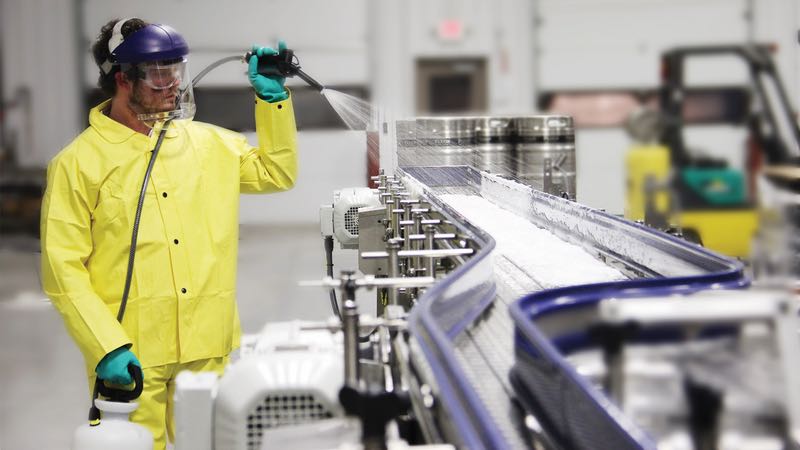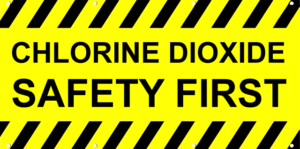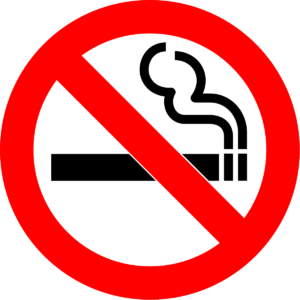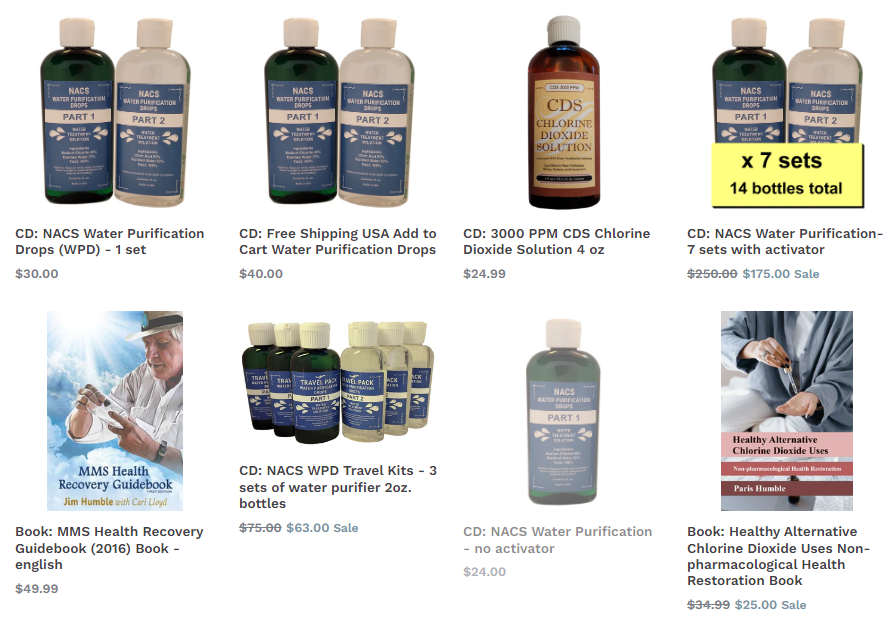There has been some concern regarding the chlorine dioxide disinfectant side effects. Since there is a wide range of usage associated with using chlorine dioxide as a disinfectant, the side effects may vary according to usage and dissemination processes. We will try to break them down for you.
Industrial Use
The use of chlorine dioxide disinfectant industrially usually involves having two separate containers or drums of individual ingredients, such as a container of sodium dioxide and another container of acid activator, such as citric acid. These two ingredients are fed to a Y connector where they are mixed in a mixing tank. Then the mixture is pressurized and sprayed onto the surface area to disinfect.
Safety Cautions
Long-term exposure (8 hours a day) is authorized by governing agencies as long as reasonable dilution limits are adhered to, such as 0.01 PPM according to the Occupational Safety and Health Administration (OSHA), National Institute for Occupational Safety and Health (NIOSH), and American Conference of Governmental Industrial Hygienists (ACGIH), with exceptions, like 0.3 PPM, for short-term exposure (NIOSH and ACGIH), i.e., 15 minutes.
Industrial Side Effects
Exceeding safety limit recommendations could cause workers to experience side effects, such as eye contact causing watery eyes and seeing halos around lights. Breathing could irritate the nose and throat causing coughing and wheezing. May irritate the lungs causing coughing and/or shortness of breath. Higher exposures can cause a build-up of fluid in the lungs (pulmonary edema), a medical emergency, with severe shortness of breath. Repeated exposure may cause bronchitis to develop with cough, phlegm, and/or shortness of breath.
Not Smoking Recommended
Because smoking can cause heart disease, as well as lung cancer, emphysema, and other respiratory problems, it may worsen respiratory conditions caused by chemical exposure. Even if you have smoked for a long time, stopping now will reduce your risk of developing health problems. Many have stopped smoking once they learned of the dangers of tar and chemical buildup in the lungs.
Over the Counter Water Purification Drops
Chlorine dioxide is available over the counter as water purification drops. Traditionally, it comes in a two-part configuration, just like the industrial applications, though the ingredients are separated into two bottles, part 1 and part 2, as pictured. For over 80 years millions of people have drunk the water purifier during outdoor expeditions, such as camping, hunting, fishing, hiking, etc., with no bad side effects. And in the last 30 years, millions are drinking the WP solution for medicinal reasons and nobody has died. It is good for detoxing the body and killing bad bacteria.
Chlorine Dioxide Disinfectant Side Effects
According to the Food and Drug Administration (FDA) exceeding the recommended dosage for the disinfection of drinking water can cause severe side effects, such as nausea, vomiting, diarrhea, and symptoms of severe dehydration.
Dosage May Vary
Mixing chlorine dioxide in drinking water will have a distinct sanitary taste, putting too much in your drinking water would make the drinking of it intolerable due to the increased bad taste. Some taste is tolerable for safety reasons, as this is the tradeoff for killing any pathogens that may exist in the water.
A reasonable person is not likely to overdose on chlorine dioxide. To drink chlorine dioxide undiluted or straight from the bottle would be just as potentially harmful as drinking regular household bleach straight from the bottle. Inadvisable and potentially dangerous. Just don’t do it.
Reduce the Dosage
The side effects noted by the FDA, nausea, vomiting, diarrhea, and symptoms of severe dehydration, are signs of too high a concentration of chlorine dioxide in drinking water. You can reduce the dosage, if you are experiencing ill effects from the disinfected water.
Some people are more sensitive to chlorine dioxide than others, so reducing the dosage by ½ is generally seen as a good idea for decreasing potential side effects. For instance, if one is using one drop of part 1 and 1 drop of part 2 activated in a dry glass, then adding an 8-ounce glass of water, increase the amount of water to 16-ounces. By doing so, you have reduced the dosage to ½ drop.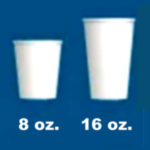
Other people would rather suffer the inconvenience of some side effects than the potential risk of having to drink unsafe or polluted water.
Caution
Seek professional advice prior to reducing the dosage or opting not to purify your water at all, but never overdose or drink chlorine dioxide undiluted.
